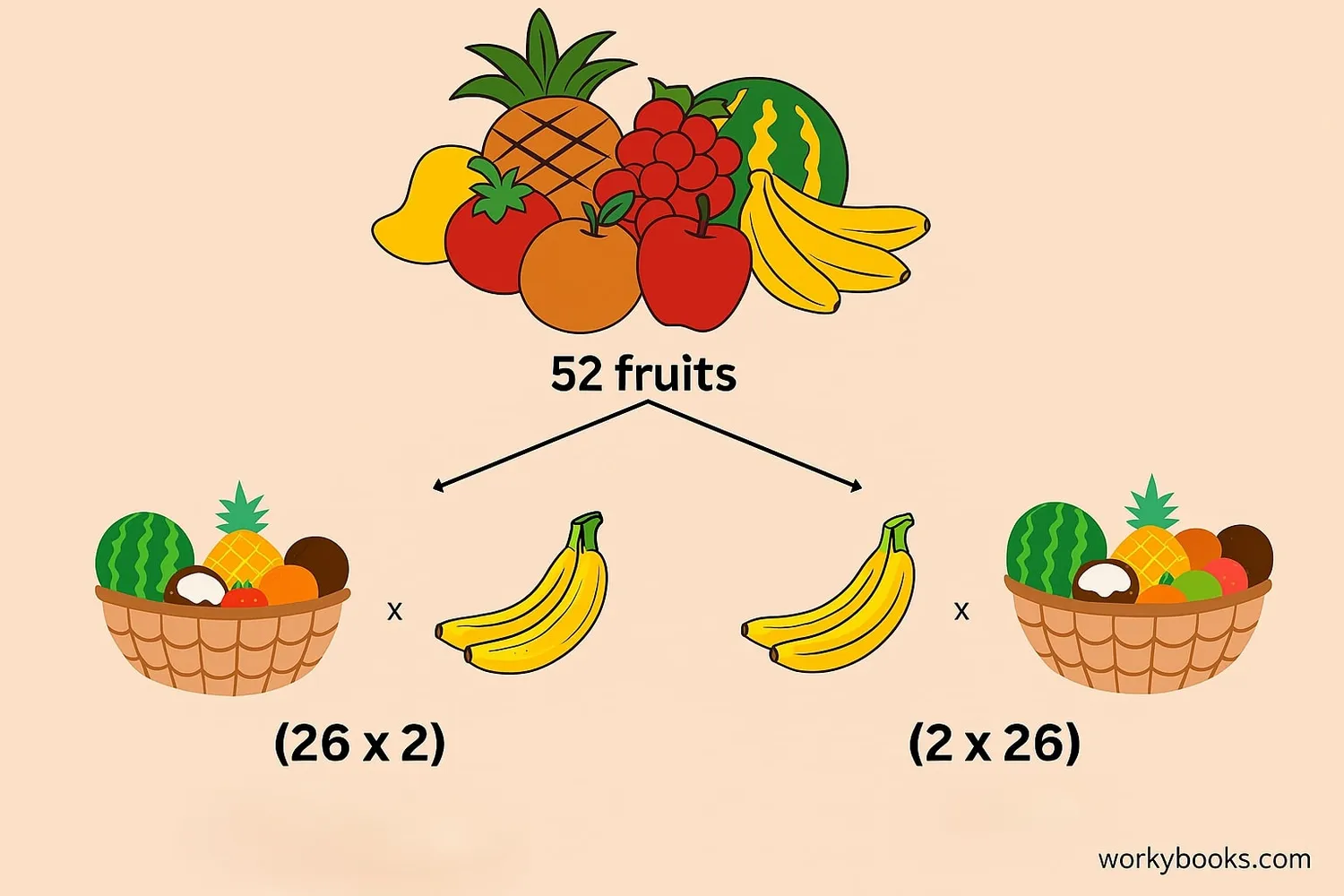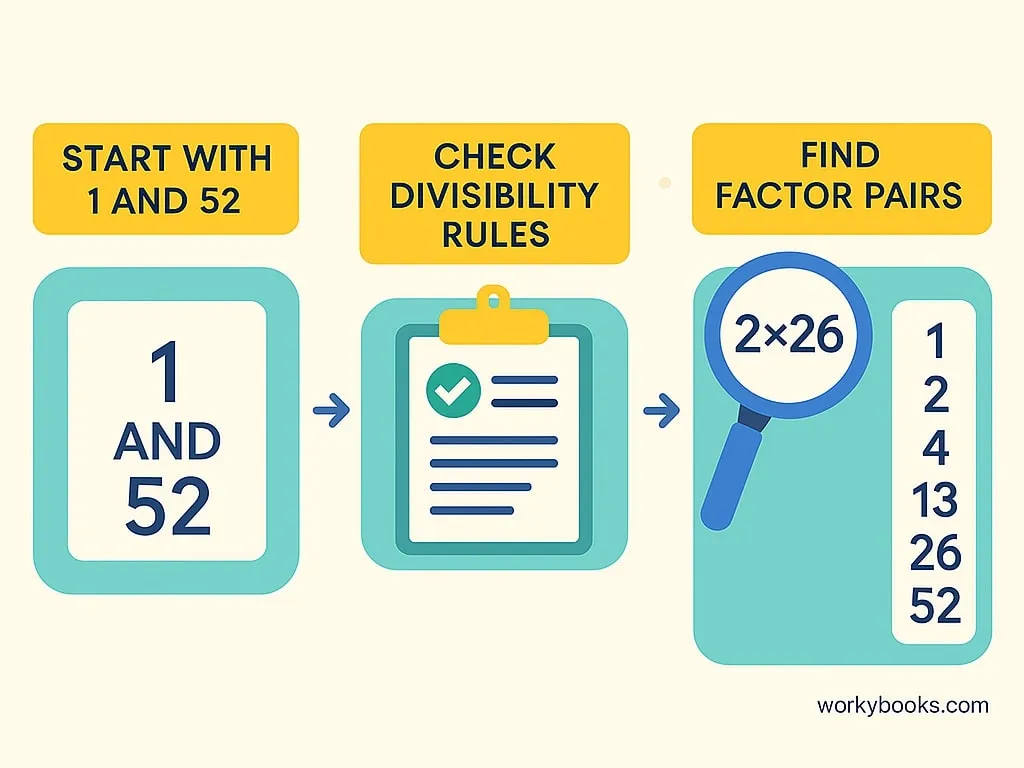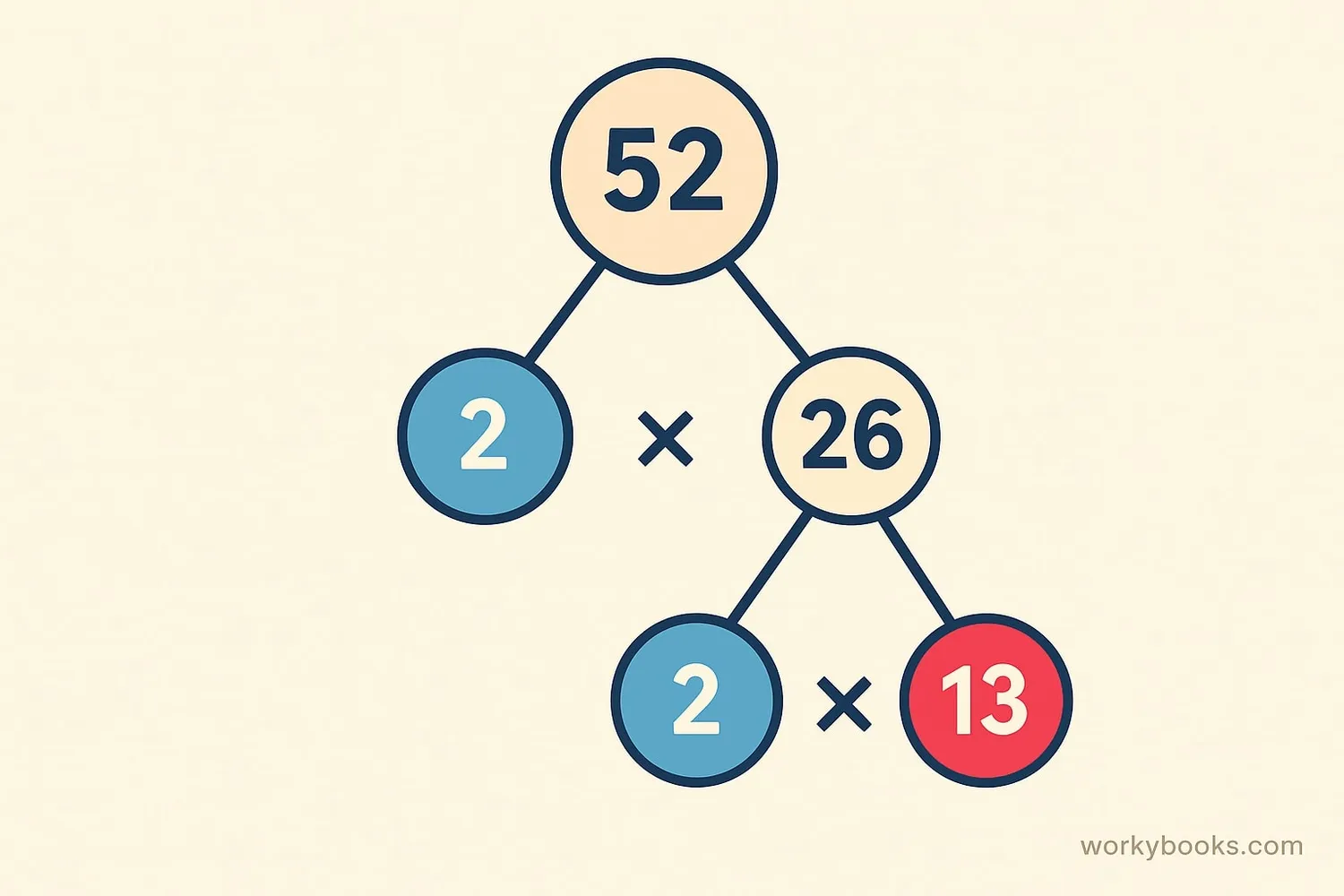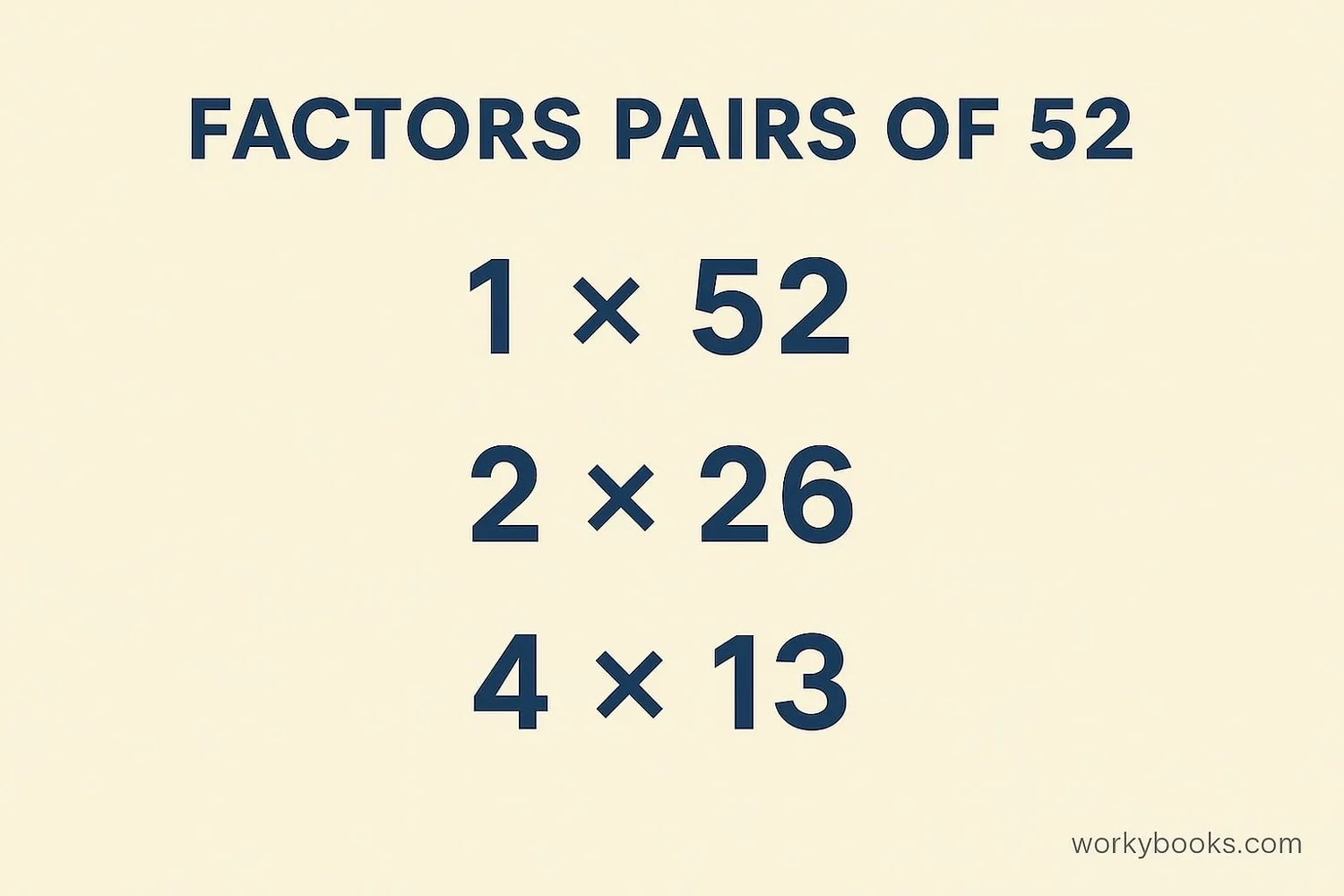Factors of 52 - Definition, Examples, Quiz, FAQ, Trivia
Learn how to find factors, factor pairs, and prime factors with step-by-step examples
What are Factors?

Factors are numbers that divide evenly into another number. For the number 52, factors are the numbers that multiply together to give 52.
Think of factors as friends who can share 52 cookies equally without any leftovers. If you can divide 52 cookies into equal groups, the size of each group is a factor of 52.
For example:
- 52 ÷ 1 = 52 (so 1 and 52 are factors)
- 52 ÷ 2 = 26 (so 2 and 26 are factors)
- 52 ÷ 4 = 13 (so 4 and 13 are factors)
Key Concept
A factor is a number that divides exactly into another number with no remainder.
How to Find Factors of 52

You can find all factors of 52 by checking which numbers divide 52 evenly. Here's a simple method:
Step 1: Start with 1 and 52 (1 × 52 = 52)
Step 2: Check 2 (52 ÷ 2 = 26, so 2 and 26 are factors)
Step 3: Check 3 (52 ÷ 3 = 17.333... not whole, so not a factor)
Step 4: Check 4 (52 ÷ 4 = 13, so 4 and 13 are factors)
Step 5: Check 5 (52 ÷ 5 = 10.4, not whole)
Step 6: Check 6 (52 ÷ 6 ≈ 8.666, not whole)
Step 7: Continue until you reach the middle
All factors of 52:
Remember
Factors always come in pairs that multiply to the original number. Once you find one factor, you automatically find its pair!
Prime Factorization of 52

Prime factorization means breaking down a number into its smallest prime number factors. Prime numbers are numbers greater than 1 that have no factors other than 1 and themselves (2, 3, 5, 7, 11, etc.).
Let's find the prime factors of 52:
Method 1: Factor Tree
-
52
- 2
-
26
- 13
- 2
- 52 ÷ 2 = 26
- 26 ÷ 2 = 13
- 13 is a prime number
So the prime factorization of 52 is 2 × 2 × 13, or 2² × 13.
Key Concept
Every composite number can be expressed as a unique product of prime factors.
Factor Pairs of 52

Factor pairs are two numbers that multiply together to make the original number. For 52, we have:
These are the positive factor pairs. But we also have negative factor pairs since multiplying two negative numbers gives a positive product:
Remember
Factor pairs are commutative - that means 2×26 is the same as 26×2. We usually write pairs with the smaller number first.
Factors Practice Quiz
Test your understanding of factors with this 5-question quiz. Choose the correct answer for each question.
Frequently Asked Questions
Here are answers to common questions about factors:
Math Trivia
Discover interesting facts about numbers and factors:
Ancient Number Systems
The concept of factors dates back to ancient Greece. Mathematician Euclid described prime numbers and factorization in his book "Elements" around 300 BCE.
Real-World Applications
Prime factorization is used in computer security to encrypt information. This keeps your passwords and credit card numbers safe when you shop online!
The Number 52 in Space
There are 52 weeks in a year, which is why astronomers use this number when calculating orbital periods and planning space missions.
Largest Known Prime
The largest known prime number has over 24 million digits! It was discovered in 2018 and is written as 2⁸²⁵⁸⁹⁹³³ - 1. Prime numbers are the building blocks of all other numbers.





